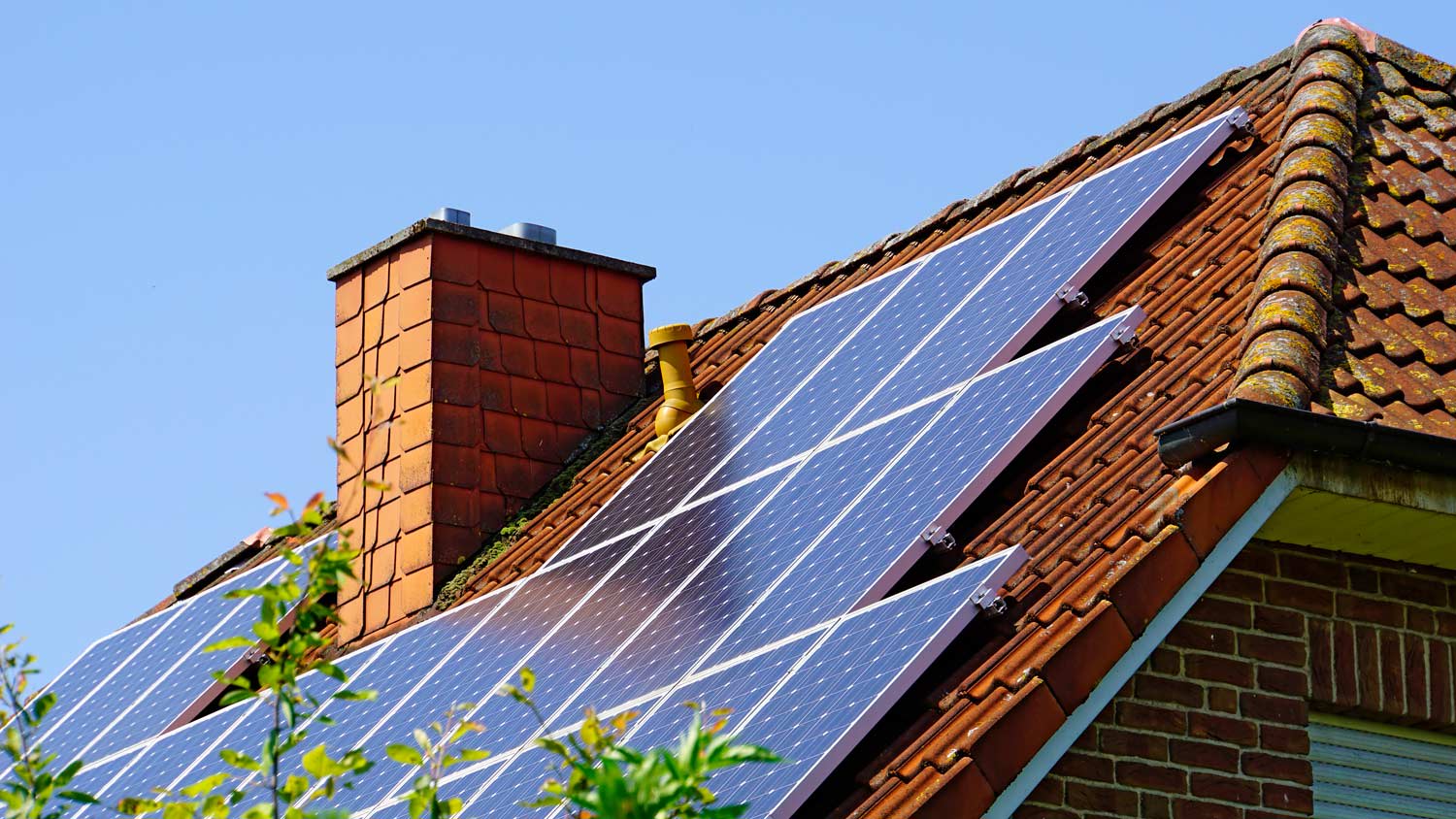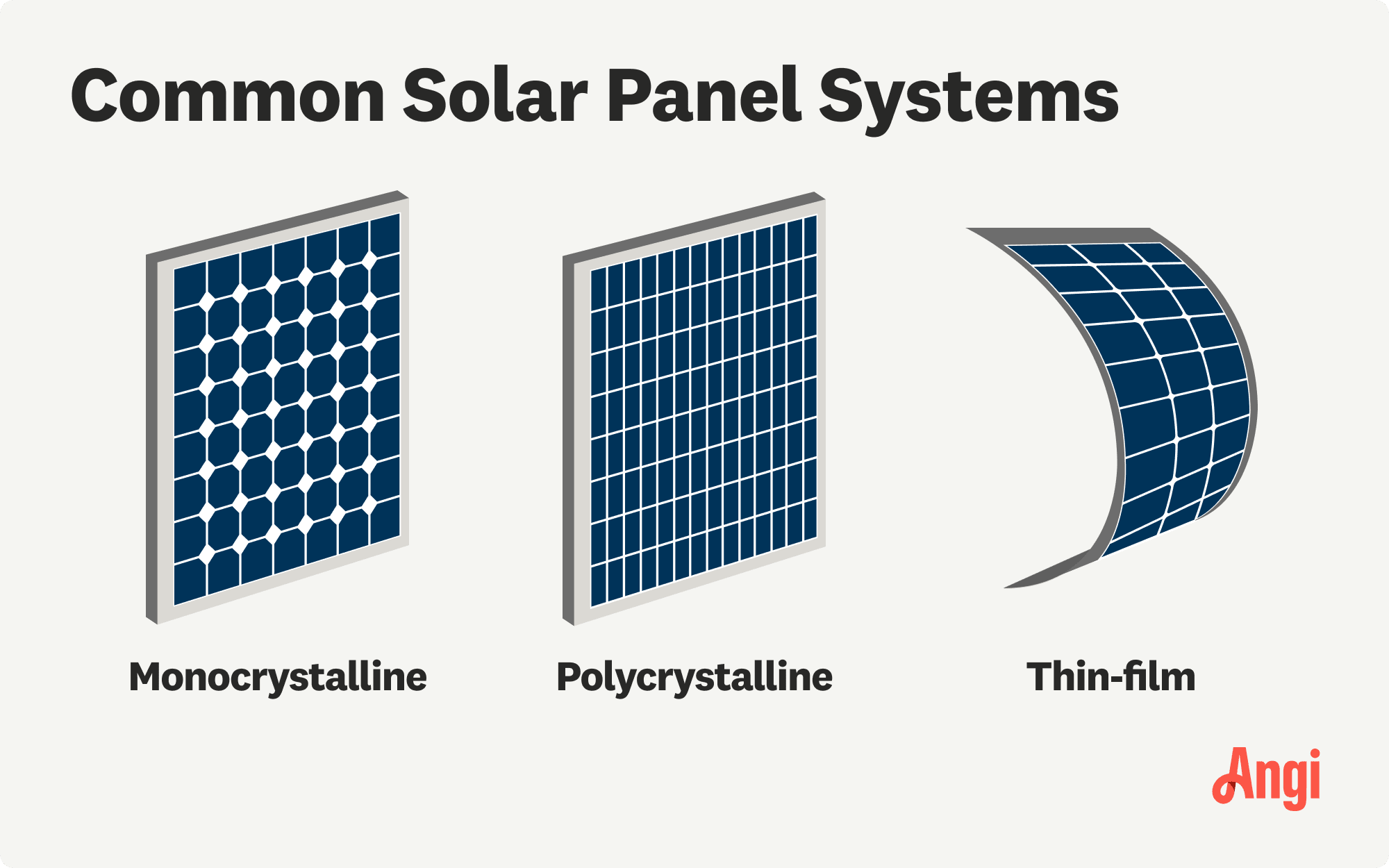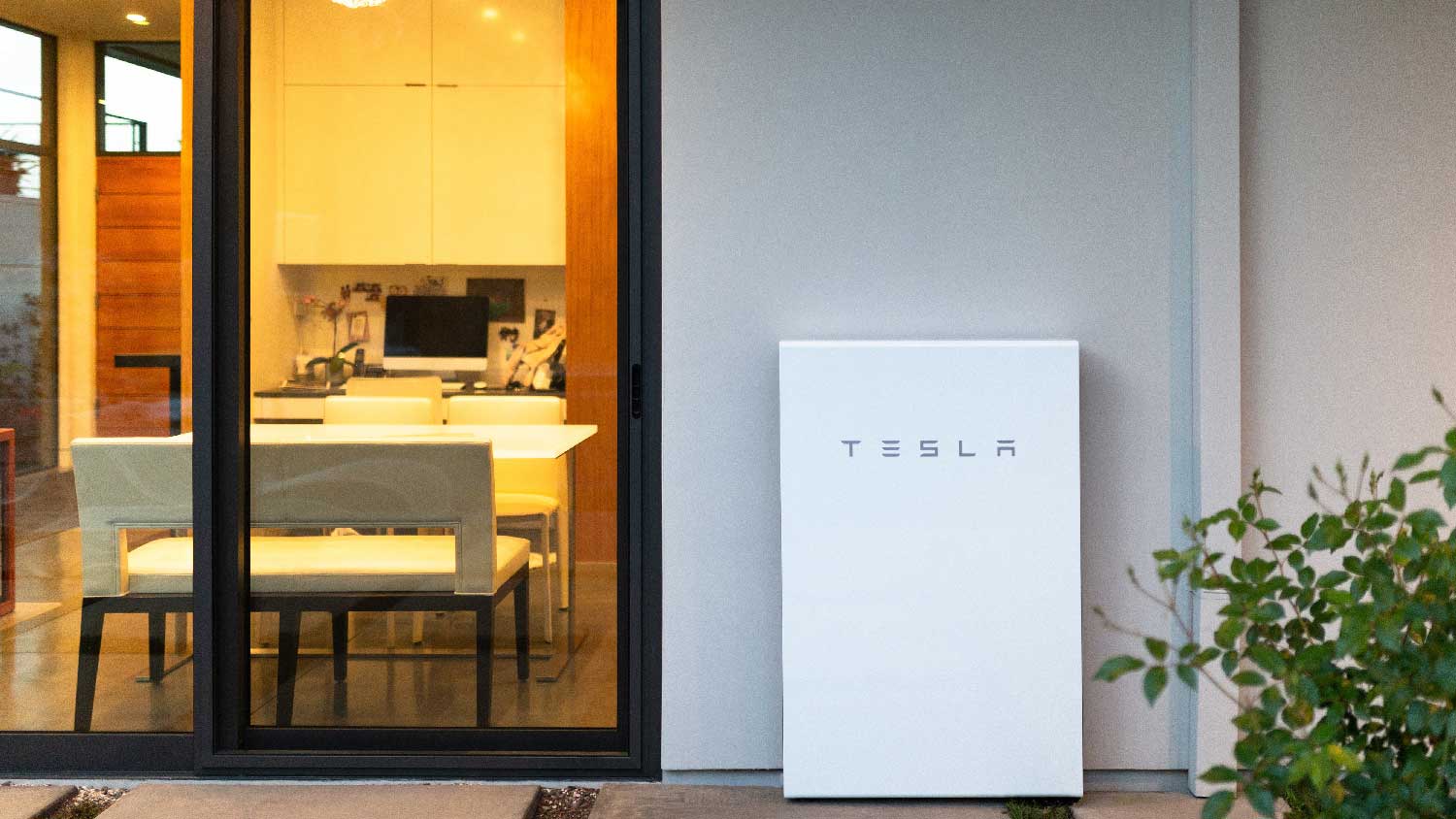
Solar battery costs depend on the size of your system, labor, and capacity. Learn how much you could pay for batteries for home solar systems.
Installing solar panels in New York City averages $25,881, though it ranges between $18,891 and $34,111 based on system size, panel type, wattage, and more. A solar panel installer can assess your roof and install your system.


Most homes in New York City require 5- to 12-kW solar panel systems.
Flat roofing on older buildings can lead to complicated and more costly installations.
Labor costs are more expensive than in other areas of the country.
Monocrystalline panels with microinverters are the go-to to for areas shaded by tall buildings.
New York City’s high electricity rates make for sizeable solar savings.
New York City has some of the highest energy prices in the United States, so homeowners with solar panels can stand to save a pretty penny over time. Solar panel installation costs $25,881 in New York City on average, with most homeowners spending between $18,891 and $34,111. The total price is largely impacted by the high cost of labor and construction challenges that come with the city’s architecture. Price your installation with the scoop on the biggest cost factors.
New York City has varying architecture—from smaller, flat-roofed buildings in densely populated areas to larger, pitched roofs across the tristate area. This means installations can look very different from home to home, but a solar installer will know how to tackle the common challenges. Factors like the size of your system, the hardware you need, and the type of panels will impact the price.
The size of the solar system will impact your solar panel installation costs. The larger the output, the more you’ll pay.
Homeowners pay between $2.70 and $3.50 per watt for solar panel installation in New York City. The average home can require a 5- to 12-kW (kilowatt) system, depending on whether you have a smaller home within city limits or a larger home in the tristate area. Since electrical needs are unique, your contractor can help you decide how many solar panels you’ll need.
The table below shows average costs based on the size of your solar system:
| System Size (kW) | Average Cost |
|---|---|
| 5 | $13,500–$17,500 |
| 6 | $16,200–$21,000 |
| 8 | $21,600–$28,000 |
| 10 | $27,000–$35,000 |
| 12 | $32,400–$42,000 |

When choosing the type of solar panel that works best for your home, consider three main factors: efficiency, life expectancy, and design. Here’s how the type of solar panel can affect your cost:
| Type of Solar Panel | Average Cost per Watt (Materials Only) | Pros | Cons |
|---|---|---|---|
| Monocrystalline | $1–$1.50 | Efficient space-saving design works best in urban environments with limited roof space | Less affordable, less efficient in shade |
| Polycrystalline | $0.90–$1 | More affordable | Less efficient |
| Thin film | $0.70–$1 | Can work for large commercial buildings with roof shading | May not meet efficiency standards in New York City |
On average, most homes need anywhere from 20 to 25 panels to fully power a home, but this can range from as few as 15 to as many as 34. How many panels you need depends on the number of watts per panel, your energy consumption, and the efficiency of your panels. Your average solar panel will have an output of anywhere from 250 to 400 watts. The dimensions of your solar panels will also depend on the power output.
New York City has a high concentration of homes with flat roofing, so your contractor will need to use hardware that sets your panels at an angle. Self-tracking mounts can help mitigate some energy losses as shade from taller neighboring buildings moves over your panels.
The more advanced the technology, the higher the up-front cost. The type of mount will affect the cost as well:
Fixed mounts: $10–$15 per mount
Adjustable mounts: $50 per mount
Tracking: $500–$3,000 or more per mount (these mounts can self-track sunlight, leading to up to 45% more energy production)
Other materials you will need for a solar energy system include the parts in the table below.
| Hardware | Average Cost |
|---|---|
| String inverter | $1,000–$3,000 each |
| Microinverters | $150–$300 each |
| Power optimizer | $80–$150 each |
| Solar battery | $400–$15,000 |
String inverters: These convert direct current (DC) electricity to alternating current (AC) electricity. This is standard, but not always the best option for panels that are shaded by neighboring buildings.
Microinverters: Microinverters work similarly to string inverters, but each panel will have an inverter that works independently. This helps compensate for shade, making them a great choice if your home is surrounded by taller buildings.
Optimizer: These regulate currents so each panel is more energy efficient and prevents power loss.
Battery: Batteries store excess energy from the system so homeowners can use it at night or during a power outage.
Some systems use a single string inverter or several microinverters that convert DC to AC electricity. Materials like the wiring and battery are often grouped with the package price unless you opt for add-on services.
Hiring an experienced pro to install your solar panels is key to making the most of this exciting new home addition. Budget $0.65 to $0.90 per watt for labor when you hire a solar panel installer in New York City. This number doesn’t include permits or the cost of additional technology, such as special mounts, tiles, or shingles.
Solar panel installation does require electrical work. Though many solar panel installation companies have a licensed electrician on staff who specializes in solar panels, roofing contractors sometimes subcontract an electrician. The average cost of hiring an electrician in New York is $80 to $170 per hour.
The total cost for permits and solar panel inspections is around $300 to $1,000. Solar installation applications can be filed with the application for a New Building Permit or Alteration Permit. Depending on the size of your system, you will also need an electrical permit, which can cost between $8 and $375.
New York has a net metering program that allows you to send excess energy to the grid for credit on future electric bills. However, net metering for many new projects has been replaced by the Value of Distributed Energy Resources (VDER) program, which allows homeowners to get credits for solar energy—but not every system or property is eligible.
Many homeowners find the return on investment of solar panels to be quite favorable, especially when you factor in the energy savings. According to a Zillow study, solar panel systems add about 5.4% to the value of homes in New York. For example, a home with the median value of $769,000 would gain about $41,000 in value, making this one of the areas with the highest return.
In New York, where electricity prices are notoriously high, solar panels can significantly save on energy. Homeowners often find a savings of $35,000 to $60,000 over the lifespan of their panels.
Once your solar panels are paid off, they're officially your property. If you move, you can reinstall them on a new rooftop. Alternatively, they can increase the value of your home by 3% to 4% and attract more buyers. They can also give your property a competitive edge in a buyers’ market.
The best way to save money on the up-front costs of installing solar panels is to take advantage of the Solar Investment Tax Credit (ITC) before it ends on December 31, 2025. The ITC allows homeowners to claim a federal tax credit equal to 30% of the price of their solar panel system installation.
For example, if your solar panel system costs $30,000 before the federal tax credit, you can save around $9,000. However, to benefit from this credit, your solar system has to be installed and working before the federal incentive ends.
The ITC, also known as the Residential Clean Energy Credit, was originally extended through 2032 as part of the Inflation Reduction Act. However, new federal legislation (the Big Beautiful Bill Act) signed into law on July 4, 2025, terminated the credit early. The Solar Energy Industries Association® (SEIA) outlines the high-level policy changes and restrictions on energy tax credits.
Additionally, the extra power you choose not to store in a battery can be sent back to the grid. Your local utility company will compensate you for that power, but the amount will vary. You can check the Utility Rate Database on Open EI to estimate how much you can expect to receive for generating excess energy.
Solar installation is pricey, but New York has a few incentives to help offset the cost, including:
NYS Solar Income Tax Credit: You can deduct 25% of solar installation costs (up to $5,000) from your state income taxes.
NYS Solar Rebate: Eligibility depends on the region and utility company, but some homeowners can get a rebate of $0.20 per watt on solar installation, paid directly to the contractor.
NYC Property Tax Abatement: For qualifying homes, this will help offset 30% of the cost of your solar system over four years.
NYS Historic Homeownership Rehabilitation Credit: For qualifying historic homes, this credit covers 20% of the cost of a solar system.
Sales Tax Exemption: Residential solar systems are exempt from state and local sales tax.
Property Tax Exemption: The added value of solar panel installation is exempt from property taxes for 15 years.
Home is the most important place on earth, which is why Angi has helped more than 150 million homeowners transform their houses into homes they adore. To help homeowners with their next project, Angi provides readers with the most accurate cost data and upholds strict editorial standards. We survey real Angi customers about their project costs to develop the pricing data you see, so you can make the best decisions for you and your home. We pair this data with research from reputable sources, including the U.S. Bureau of Labor Statistics, academic journals, market studies, and interviews with industry experts—all to ensure our prices reflect real-world projects.
Want to help us improve our cost data? Send us a recent project quote to [email protected]. Quotes and personal information will not be shared publicly.
From average costs to expert advice, get all the answers you need to get your job done.

Solar battery costs depend on the size of your system, labor, and capacity. Learn how much you could pay for batteries for home solar systems.

Discover the Tesla Powerwall installation cost, including average prices, cost factors, and tips to help homeowners budget and save on their Powerwall project.

There are a few factors to consider when it comes to solar panel repair costs. This guide breaks down the prices of solar panel removal, repair, and replacement.

Discover the top 10 states with the best infrastructure for solar panels and find out if solar will work for your home.

What is solar farming? Learn how solar farms work, types, pros and cons, and how this renewable energy boom can help you turn daylight into power.

Do solar panels damage roofs? We’re breaking down the different ways damage can occur post-installation and how to avoid issues.